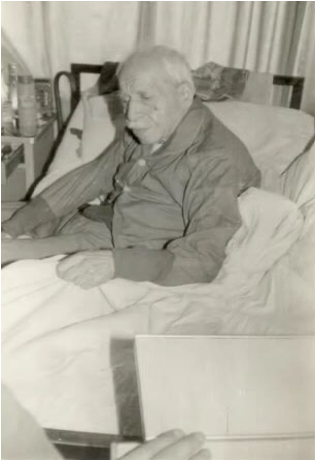Portrait: Hamid Aytaç, Part 2
Exploring the Artistic Journey and Legacy of Hamit Aytaç, Renowned Turkish Calligrapher in the 20th Century.
Printing Business and Years After Alphabet Reform
He worked as a calligrapher with Mehmed Emin Efendi at the Rüsûmat Printing House, the Mekteb-i Harbiyye (Ottoman Military College) Printing House and later at the Erkan-ı Harbiyye-i Umûmiyye (Ministry of General Staff) Printing House, where he was appointed upon the death of his teacher Mehmed Nazif Efendi.

Hamid Aytaç specialized in cartography in Germany for a year, and when he returned to Istanbul, he opened an office for himself named ‘Yazı Yurdu (House of Calligraphy)’ in the historical peninsula due to his job as a civil servant and started making calligraphic pieces with the alias of Hamid. After a while, he left his official job and devoted himself completely to this job.

After the 1928 alphabet reform, he turned his workshop into a printing house and engaged in works such as plate making, zincography, pantography, luxury labels and business card printing for finished goods.
In addition to these, it continued to meet special requests and commissions domestic and abroad by not giving up on Islamic Calligraphy.

Hamid Aytaç started working for the Paşabahçe Glass Factory in 1960. He wrote various calligraphic pieces on the glassware manufactured there. His various writings on glass and porcelain were very popular in the market.
Nevzat Duman, who worked at the factory and also took calligraphy lessons from Hâmid Aytaç said about his teacher, “Our teacher's working time was two days a week. Therefore, he would come to the factory on Tuesdays and Thursdays. I and many of our friends used to take lessons from him.”
Hamid Bey retired in 1975; He spent the rest of his life writing.

Final Years and Death
Hamid Aytaç had the privilege of writing the Qur'an twice since the 1960s. At the same time, he had the utmost happiness of seeing one of them in print. The other was published after his death.
In the last years of his life, he trained many students at home and abroad and gave ijazah (a license authorizing its holder to sign artworks with his name and train students). Hasan Çelebi, Halim Özyazıcı and Iraqi Hashim Muhammed al-Baghdadi are among those who benefited from him.
He was transferred to Haydarpaşa Numune Hospital in early 1980 due to his increasing health problems. He was treated here until his death after leaving his atelier in Cağaloğlu Reşit Efendi Inn. He passed away on May 19, 1982. His grave is in the Karacaahmet Cemetery, near the tomb of the famous calligrapher Sheikh Hamdullah.
His Art & Legacy
When he came to Istanbul, he learned a lot from Hacı Nazif Bey, whom he met through Süreyyâ Bey, the principal of the school where he taught calligraphy. Hamid Bey benefited from the masters of Jali Thuluth and also from Kamil (Akdik) and Neyzen Emin (Yazıcı) in Thuluth and Naskh scripts. He studied the tughra with Tuğrakeş İsmail Hakkı (Altunbezer) Bey.
Although he continued with Hulusi (Yazgan) Efendi for a while in Taliq script, he was mostly influenced by the writing samples of Mehmed Esad Yesari and adopted his way.

He used the signature "Sheikh Mûsâ Azmî", "Mûsâ Azmî" or simply "Azmi" in his writings until 1916, and after this date, he used the signature "Hâmidü'l-Âmidî" or only "Hâmid" to refer to his being from Diyarbakır, and he was better known for it.
Conclusion
Hamid Aytaç's personal effort comes to the fore in developing his art. He did not train under a single calligrapher in the classical sense but proceeded by consulting and negotiating with the calligrapher authorities and by patiently and meticulously examining the writing samples of the old calligraphers. He has made himself accepted by the art circles with the personality of an artist who uses a pen with almost the same skill as others.
As of today, Hamid Bey poses a great example of perseverance, hard work and skill for all aspiring artists. Without him, it’s safe to say that it’d be impossible to talk about how far Islamic Calligraphy has come.









